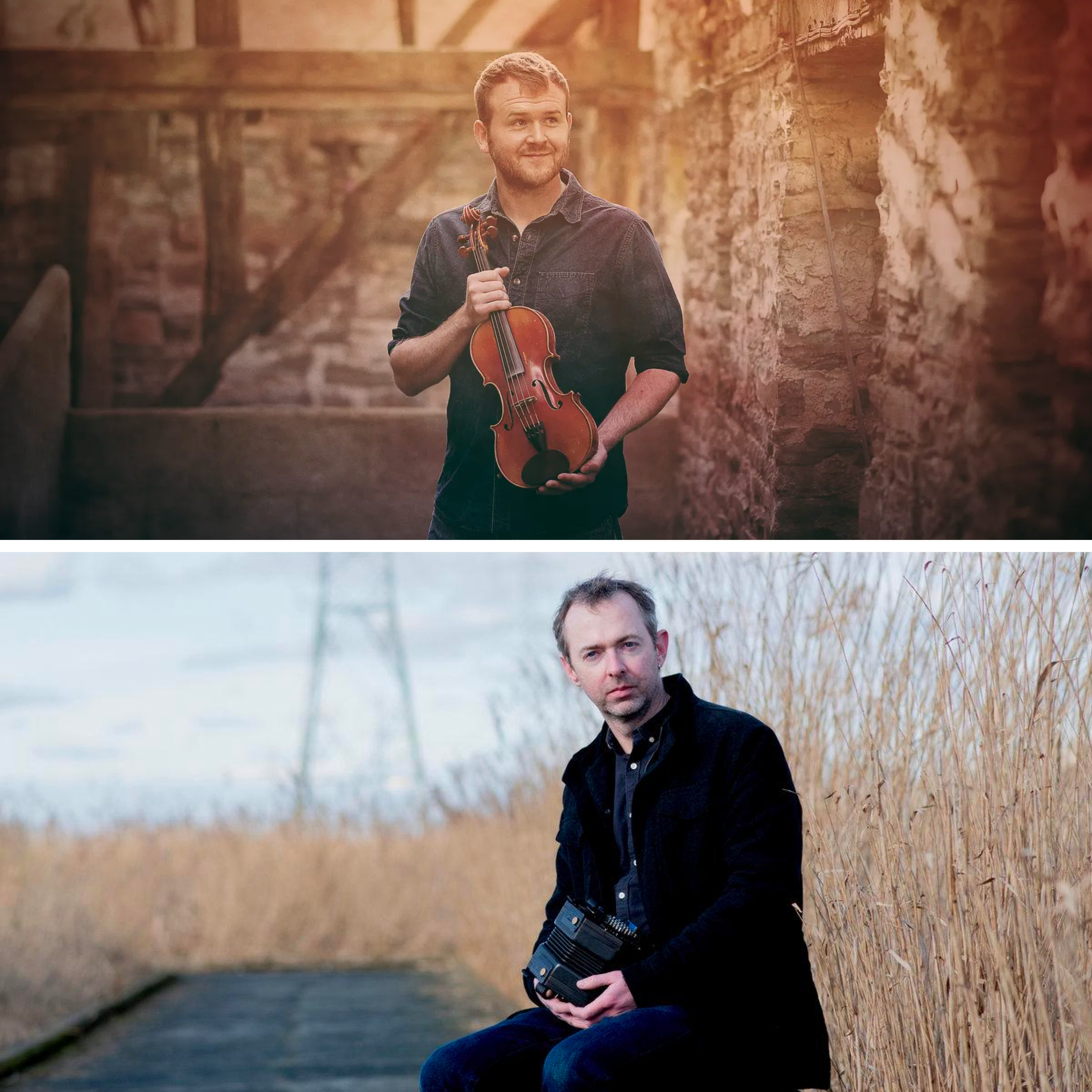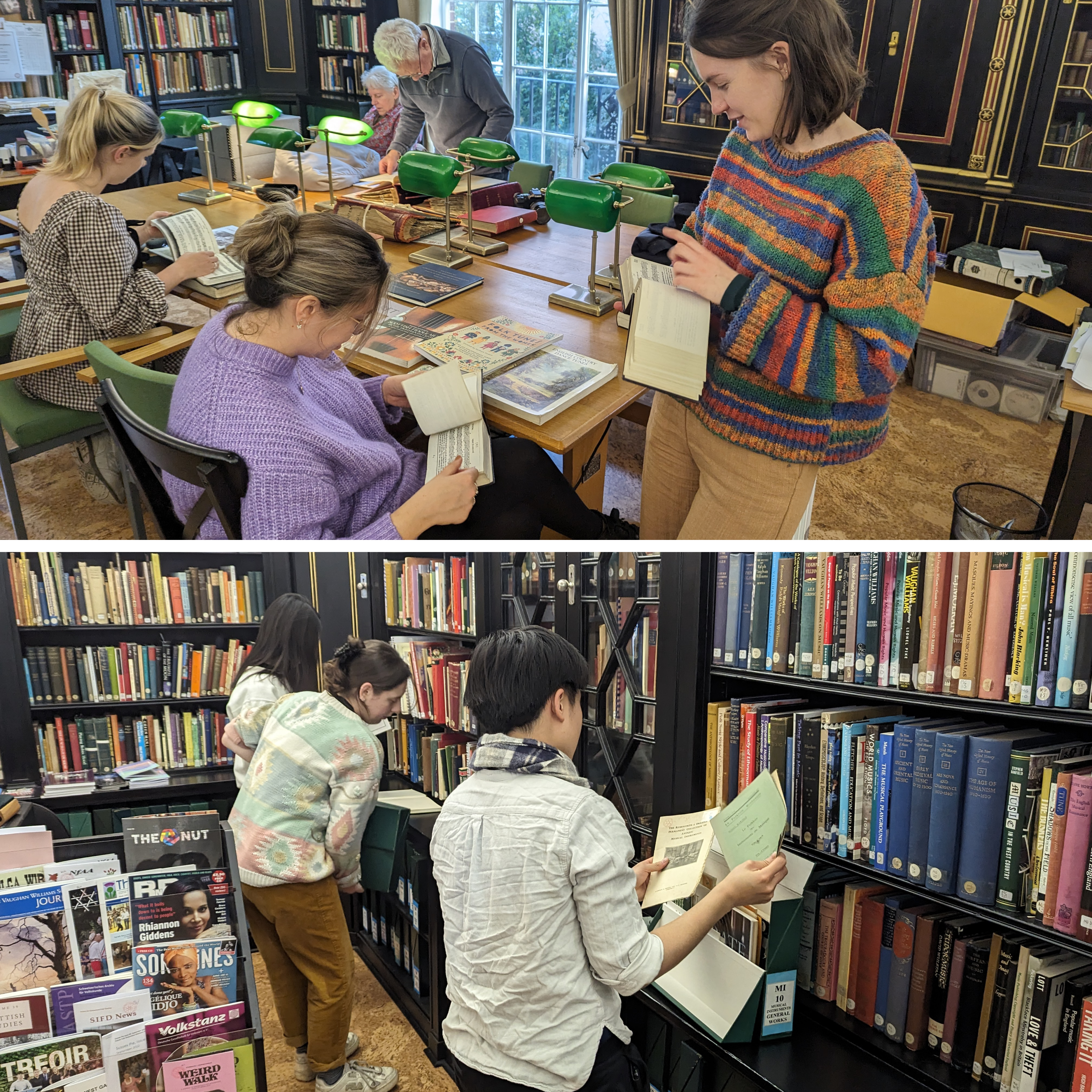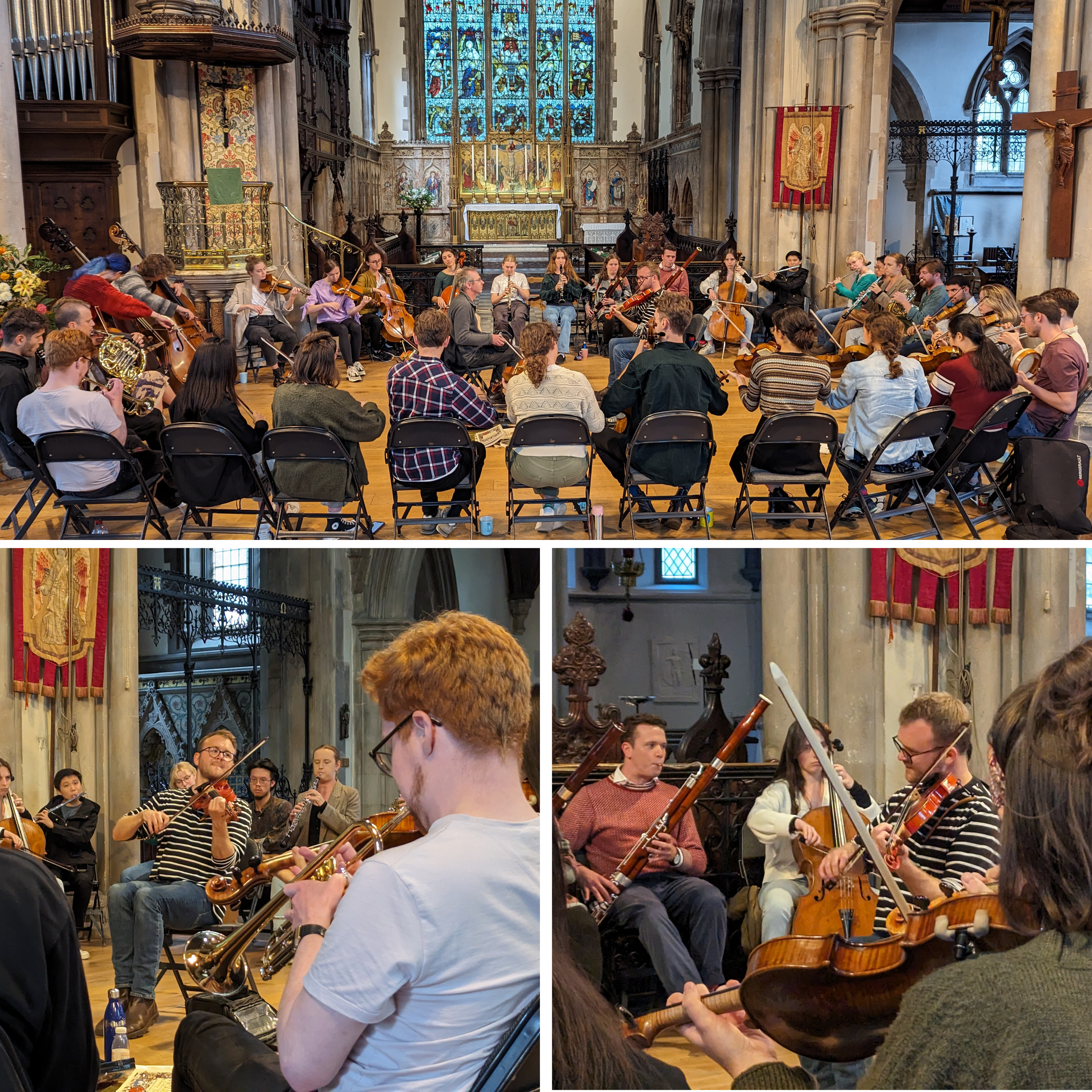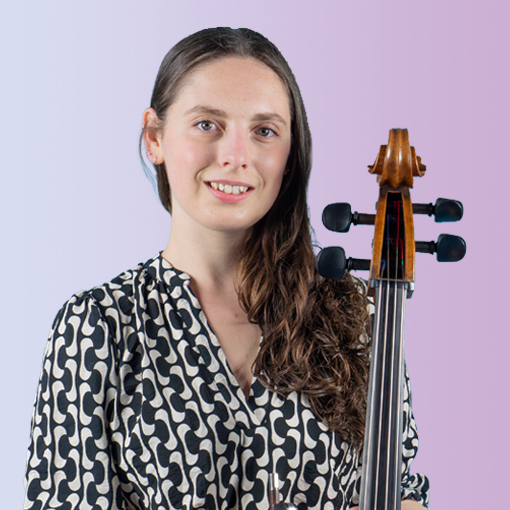Jenny Sturt
Cello
My knowledge of folk music before starting this project consisted of a vague memory of watching a Morris group when I was small and half-hearted introductions to folk music at school. I had no idea who ‘The Collectors’ were, or why they were the title of our upcoming folk-infused #ConcertLab. In short, my view of this whole other musical world was somewhat narrow, and, to nobody's surprise other than mine, there's a lot more to folk music than that.
But I hear you cry: how do we turn 33 modern classical musicians playing orchestral instruments into folk music aficionados (and also enjoy the process along the way)? The answer: you give them Sam Sweeney and Rob Harbron as tutors, and magic will happen. Sam Sweeney and Rob Harbron make up two-thirds of the band Leveret, in addition to being skilled folk musicians (or 'folkies' as they would say) in their own right. Sam plays the fiddle, and Rob plays the concertina (a small squeeze-box instrument). We met them for the first time in October of last year.

Sam Sweeney & Rob Harbron
Entering that first session, I had little expectation of how enjoyable it would be. Sam and Rob introduced themselves and their ideas for our project: we would be performing works by 'The Collectors' as well as our own folkie arrangements of tunes. The plan was to discover these folk tunes for ourselves by either listening or rummaging around written folk music sources. Or, as Sam called it, we'd be submerged in the proverbial Folk Bath.

'The Collectors' were composers such as Gustav Holst and other big-time folk fans like Cecil Sharp, who travelled around the countryside at the turn of the last century and recorded local melodies. Traditionally these melodies were passed down aurally, meaning players learned the tunes by ear. This meant that there were a lot of potential variations of one tune, as people added their own flair and musical ideas. There’s a whole PhD in there somewhere about the aural tradition of folk music and the changes that modern technology, life, and musicking have had on the art form. Certainly, the collectors felt that there was a risk of these wonderful and unique ideas being lost to time, which is why they went out of their way to enshrine their essence. After the melodies were written down, they were adapted into compositions by their respective collectors. Take Béla Bartók's work 'Romanian Folk Dances' as an example.
The main written source we used to discover Folk melodies was the library at Cecil Sharp House in Camden. A key manuscript was John Playford’s 'The Dancing Master,' which was a book of English Country dance tunes—amazingly, it was first published in 1651! If you open a copy of The Dancing Master, you’ll find a treasure trove of tunes but very little information besides the most basic dots on the page indicating a shape of the melody. It’s up to you, the folkie, to interpret them and furnish a tune with a counter melody, bass line, or even basic music theory principles like a key signature or time signature. It was at this point that I, a self-professed music theory sufferer, started to get nervous. As a classical musician, my skill set is curated towards reading sheet music and technically mastering my instrument. In situations where learning by ear or improvisation is required, I often feel like a duck out of water.
However, Sam and Rob quickly put my fears of painstakingly analysing each and every theoretical principle of a folk tune to rest when they mentioned that the third member of Leveret didn’t even read notated music. If Andy Cutting can become a three-time BBC Folk Awards Best Musician, then I think that little old orchestral musician-me will be just fine.
We sat in the round (the whole ensemble in one giant circle) with Sam and Rob in the middle facing each other. This setup highlighted the egalitarian and communal roots of folk-music. Furthermore, it was exciting to have a bassoonist close on the right and a flautist on the left when I'm used to admiring their playing from my seat in the cello section.
Rob and Sam explained to us in a very nuanced and entertaining way how they approach learning and adapting a new melody. Their technique of playing together involved a lot of dance like foot tapping which added both a visual and sonic element, but most importantly kept them in time with each other. We spent some time learning a few tunes by ear, which was nerve wracking, but also satisfying to exercise a rarely used musical muscle.

In preparation for the concert, we broke out into smaller groups and attempted to arrange our recently found tunes, using all the techniques Sam and Rob had taught us in addition to inspiration from our marination in the Folk Bath. Whilst Leveret makes performing folk music look effortless and as natural as breathing, for us mere mortals it can be anything but. In my group (named Simon’s Office as that was our rehearsal location, but then swiftly renamed Escaping Simon’s Office when we found it to be an unsuitable breakout space) we spent an entire day learning two tunes only to scrap them and re-learn something different on the next. Our next hurdle was finding a balance between defined structure, and complete improvisation. How off the rails can us fledgeling folkies go when we’re still struggling to learn the notes? But luckily through trial and error (and no small amount of encouragement from Sam, Rob, and our peers) we prevailed and have our own little Frankenstein creation of three tunes ready for your listening ears.
One of my favourite parts of this project has been having the opportunity to watch Rob and Sam play, to play tunes with them myself, and of course, to listen to many different recordings and even a live performance by Leveret. I suppose this is the aforementioned Folk Bath, and I invite anyone even slightly interested to dive in, the water’s lovely.
What moved me the most about this project was the musicianship involved in creating our own folk arrangements. There really is a palpable sense of presence one feels when in the act of playing with other people, remembering the tune, improvising around the melody, and (most important of all) responding to what your fellow performers are doing. Opening my ears to this sense of collaborative freedom and creativity made exploring the history and music surrounding the collectors special and satisfying. I can only hope that one day I’ll be a collector too.

Find out more about Jenny here
Book tickets for The Collectors performance here




